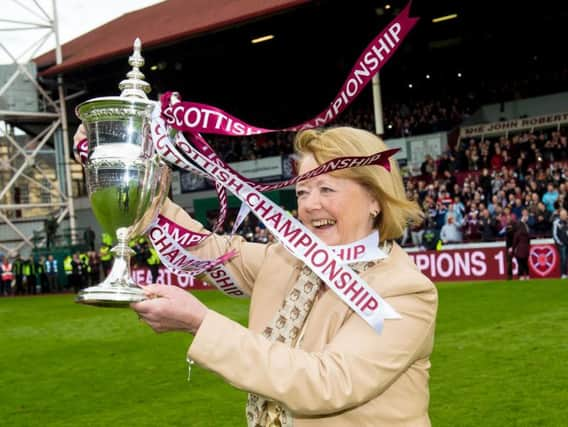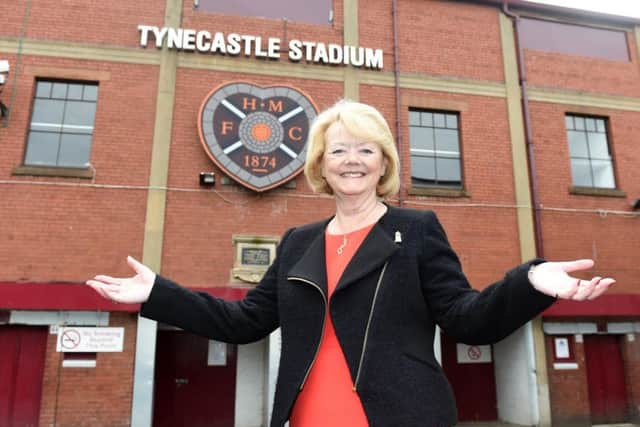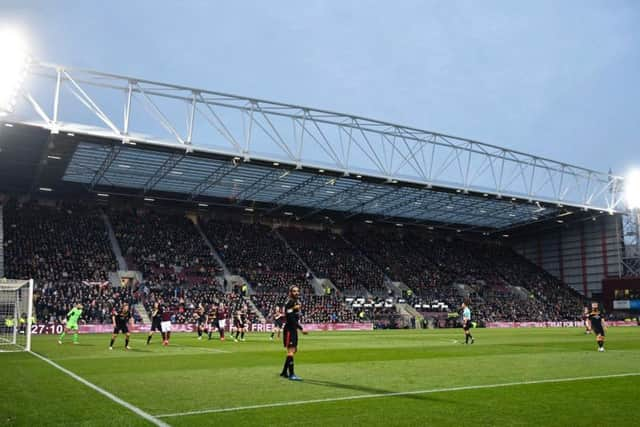How Hearts have progressed five years to the day since administration ended


It was on June 11, 2014, that the vast majority of the Edinburgh club's shareholding was released by administrators of defunct Lithuanian companies and passed to Ann Budge. The remnants of Vladimir Romanov's often-catastrophic reign would quickly disappear.
Budge, a local businesswoman, had moved into Tynecastle Park a month earlier in anticipation of seizing control from Hearts' own administrators, BDO. However, the landmark moment arrived when BDO's insolvency expert, Bryan Jackson, visited Edinburgh's Court of Session to formally lodge the papers for exiting administration.
Advertisement
Hide AdAdvertisement
Hide AdBudge paid £2.5million to fund the Creditors' Voluntary Arrangement, backed by Foundation of Hearts and monthly cash donations from 8,000 supporters. Ian Murray MP, the FoH chairman during administration, had worked tirelessly to secure the club's future along with so many others determined not to let Hearts die.


There would be plenty key moments during the subsequent five years but there can be no questioning Hearts' remarkable progress under Budge's stewardship.
She instantly appointed Craig Levein director of football in 2014, and he in turn promoted Under-20 coach Robbie Neilson to the head coach's role. Then came a raft of necessary signings to reinforce the squad. Hearts had been relegated from the Premiership in May 2014 after a 15-point deduction for entering administration was imposed along with a signing ban.
Osman Sow, Morgaro Gomis, Alim Ozturk, Neil Alexander and Danny Wilson all signed and helped the team win the Championship title in record time. That secured automatic promotion back to the top flight at the first attempt. It was no mean feat given Rangers and Hibs were also in the division that season.
Advertisement
Hide AdAdvertisement
Hide AdNeilson continued the upward trajectory the following year, guiding newly-promoted Hearts to third place in the Premiership and a spot in the Europa League qualifying rounds. It completed a stunning turnaround just two years on from the club almost going out of business entirely. They sold Sow to China for more than £1m but made a rather astute investment with the £120,000 capture of John Souttar from Dundee United.


Neilson departed for MK Dons in November 2016. His final game, a 2-0 win over Rangers, left Hearts sitting second in the league as Ian Cathro arrived to take over as head coach. Austin MacPhee was appointed as his assistant.
The squad was revamped during the January transfer window with nine new signings, but they finished fifth. Christophe Berra returned to his formative club that summer, however Cathro was sacked at the end of July as Hearts were embarrassingly knocked out of their Betfred Cup group by lower-league sides. A month later, Levein stepped back into the manager's role he had vacated way back in 2004.
Hearts were flourishing financially thanks to good business acumen at board level. Turnover for the year ending June 2017 increased by £1.3m to £11.3m with more than 13,700 season tickets sold.
Advertisement
Hide AdAdvertisement
Hide AdThe crowning achievement of Budge's tenure - and her legacy to leave future generations - was the opening of Tynecastle new main stand in November 2017. The stadium's redevelopment project will cost £18m in total and has not been without teething problems, but the structure of a new main stand was vital to haul Tynecastle into the 21st Century.
BT Murrayfield became a temporary home before the stand was used for the first time against Partick Thistle on November 19 that year. One month later, it was given its first proper endurance test as the stadium rocked during Hearts' 4-0 win over Celtic - ending Brendan Rodgers' record 69-game unbeaten domestic run in the process.
Finishing sixth in the league was an undoubted disappointment. Hearts had used more teenagers than any other side in Europe during the campaign as Levein's background work restructuring the youth academy began to bear fruit through the likes of Harry Cochrane, Callumn Morrison and Anthony McDonald. He still recruited 18 new players that summer, while Jamie Walker and Kyle Lafferty were sold.
Season 2018/19 started in blistering fashion. A new £1m hybrid pitch was installed at Tynecastle and Hearts sat six points clear at the Premiership's summit by October. They would again finish sixth after relentless injuries took their toll, although progress in cup competitions was some consolation. They reached the Betfred Cup semi-final and Scottish Cup final, losing to Celtic on both occasions.
Advertisement
Hide AdAdvertisement
Hide AdSupporters have seen their club restructured over the last five years following the financial collapse. What do the next five hold? Budge is due to pass ownership of Hearts to the Foundation next spring and they will then run things on fans' behalf. That was the plan all along.
Five years ago today, Hearts were taken off life support and put back in the hands of sensible owners. Never again should their existence be threatened.